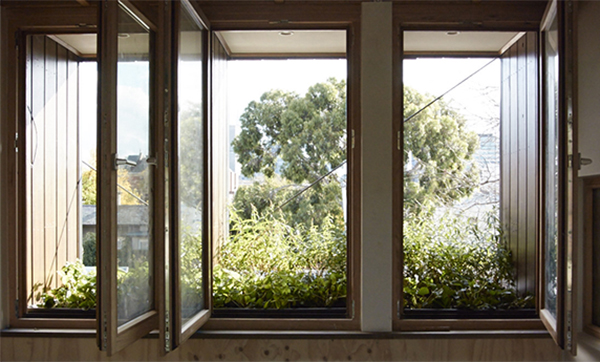Paarhammer is having an extended closure over the Easter period.
We will close on Thursday the 17th of April and will re-open on Monday the 28th of April.
Click here to view our latest blog
Correct Ventilation and Energy Efficiency

Well sealed windows and high energy glazing save energy and provide a comfortable living environment – and that’s how the danger of mould growth increases.
This seeming contrast is easy to explain.
During the normal use of a living space large amounts of steam are released, e.g. through cooking, washing, showering or washing dishes. Also every human
dispenses about ½ litre of water through the skin and even more than 1 litre through breathing into the air. On average we release about 10 litres of humidity
into the air each day per person, including our activities.
But the air cannot take up unlimited amounts of moisture. With a relative humidity of 100% the air is saturated. Temperature also has an influence on
the amount of steam the air can absorb. At 0 degrees it is about 5 grams per cubic meter of air, at 20 degrees it is 17 grams and at 30 degrees this figure
rises to 30 grams.
In a heating climate when the warm air in the room meets colder areas, it cools down. The air in these areas cannot absorb as much moisture but releases
parts of it in water. Easy to see when you wear glasses and walk into a warm room from the cold outside: the glasses steam up. In a cooling climate the
opposite occurs.
Old windows did not seal well and were mostly draughty. This meant that warm air was constantly lost which is a huge waste of energy, but the vapour rich
indoor air was continually and automatically exchanged with dry outdoor air. Modern window frames are very well sealed and have low air infiltration.
Modern double and triple glazing saves a lot of energy, so very little warmth is lost through the glass. This also means that condensation does not happen
on the glass anymore but rather on the non-thermally broken aluminium frames and un-insulated walls – the coldest place in the room - and that’s where
mould may start to grow.
That’s why it is so important to ventilate correctly
The larger the difference between indoor and outdoor temperatures, the shorter one should ventilate. With cross ventilation only 2 minutes of fully opened
casement windows are necessary to exchange the whole air in a room. If cross-ventilation is not possible, one should open windows fully for about 4-8 minutes.
With awning or tilt only windows this increases to 6-15 minutes for a full air exchange. It is best to do this 2-3 times per day. After ventilating, the
room temperature rebounds quickly as walls, floors and furniture are still warm. Also, dry air feels warmer than moist air.
Correct ventilation saves energy, is hygienic and eliminates mould. If windows are steamy, ventilate immediately, especially the bathroom. If washing
is dried indoors or in an un-vented drier, humidity is increased; again, ventilate immediately.
Passive houses often have a heat recovery system which takes care of humidity automatically by exchanging air while recovering the warmth from the air
that is being removed. This ensures that the temperature of the home is stable, energy efficiency remains high, and running costs of the home stay low.
Save energy, reduce heating costs, decrease environmental impact and increase indoor comfort by simply opening your windows for a few minutes twice a
day. Tilt and turn windows make it easy to ventilate correctly.
Learn more about Window Styles including tilt & turn